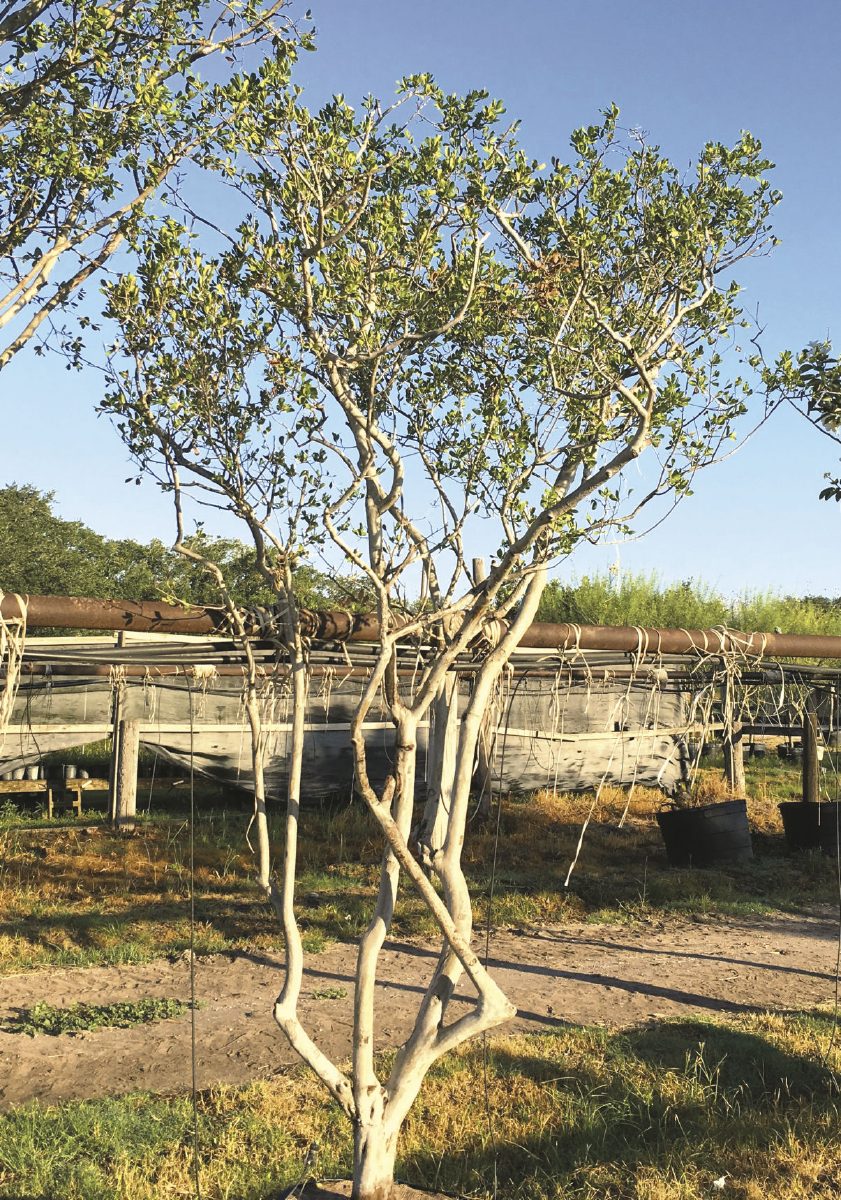BY MARY BETH SIMMONS , Texas Certified Nursery Professional
Often over-looked and underused, Texas Persimmons (Diospyros texana) is becoming highly sought after in the landscape industry. This small deciduous tree grows naturally in the alkaline soils and caliche hills throughout central, west, and south Texas and into Mexico. Deciduous means that it loses its leaves in the winter. In all but the coldest of winters, it will hold on to most of its leaves here in the Rio Grande Valley. Its dark green leaves are oval shaped; the fresh leaves have a fuzzy, velvety feel.
Also known as Chapote, this tree is easily identified by its smooth light gray trunk, similar to that of a crepe myrtle or a madrone tree. As the tree ages, layers of the bark exfoliate to reveal light colors in various shades of pink, white and gray. In nature, Texas Persimmons are often found growing in groups.
Planting multiple trees together will create a beautiful focal point in your garden. These trees look especially striking contrasted by a low-growing, dark green ground cover, such as Asian jasmine, mondo grass, or frog fruit. They are sure to be a bright spot during winter months when our landscapes are without many flowers, foliage, or other ornamentation.
Texas Persimmons is a slow growing tree that reaches a mature height of fifteen to thirty feet. After establishing their root systems for a few years, these trees are quite drought tolerant.
The one thing they will not tolerate is soggy roots for long periods of time. Be sure to plant them in well-drained soil. Like most native plants, they have few pest problems. It is a larval host for the Gray hairstreak and Henry’s Elfin butterflies.
The flowers are small, white to pale green colored, and urn-shaped. They bloom in March and April. All types of persimmons trees are dioecious. This means that male and female flowers bloom on separate trees. You must plant at least two (one male and one female tree) if you want fruit. The fruit ripens anytime between June and August.
Texas Persimmons sets fruit at a fairly young age. By the time they have ½ – 1” of caliper on the trunk, the female trees are fruiting. Birds and mammals alike love the prune-like taste.
The fruit is a dark purple and was once used by native Americans to dye animal hides. Unless you know that yours is a male and will not produce fruit, do not plant a Texas Persimmons over paved areas, where it will drop fruit and stain the pavement.
Although these tree is easily grown from seed and easily dug either from the wild or the fields of tree growers, they are not readily available in nurseries. If you want to add one to your landscape, plan to plant it in the fall or winter but begin to locate it in late summer.
Your local nursery or landscape installer should be able to acquire one for you.
With smaller yards, water conservation, and easy care in mind, Texas Persimmons is a tree that should be at the top of everyone’s list. It is one of Texas’ premier small native trees.
References: Texas Trees by Howard Garrett
Online References: Lady Bird Johnson Wildflower Center and Aggie Horticulture








